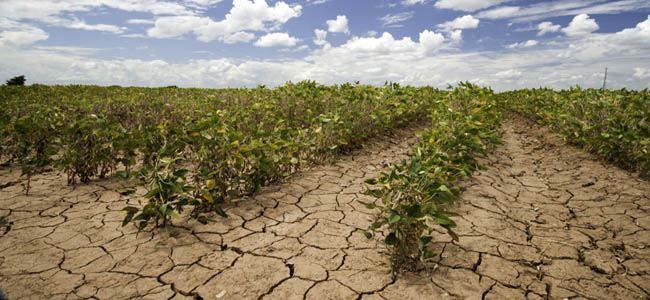Higher temperatures caused by anthropogenic climate change made an ordinary drought into an exceptional drought that parched the American West from 2020–2022. Evaporation accounted for 61% of the drought’s severity, while reduced precipitation only accounted for 39%. Evaporative demand has played a bigger role than reduced precipitation in droughts since 2000, which suggests droughts will become more severe as the climate warms.
“Research has already shown that warmer temperatures contribute to drought, but this is, to our knowledge, the first study that actually shows that moisture loss due to demand is greater than the moisture loss due to lack of rainfall,” said Rong Fu, a UCLA professor of atmospheric and oceanic sciences and corresponding author of a study published in Science Advances.
|
Anthropogenic warming has ushered in an era of temperature-dominated droughts in the western United States
“Historically, meteorological drought in the western United States (WUS) has been driven primarily by precipitation deficits. However, our observational analysis shows that, since around 2000, rising surface temperature and the resulting high evaporative demand have contributed more to drought severity (62%) and coverage (66%) over the WUS than precipitation deficit. This increase in evaporative demand during droughts, mostly attributable to anthropogenic warming according to analyses of both observations and climate model simulations, is the main cause of the increased drought severity and coverage. The unprecedented 2020–2022 WUS drought exemplifies this shift in drought drivers, with high evaporative demand accounting for 61% of its severity, compared to 39% from precipitation deficit. Climate model simulations corroborate this shift and project that, under the fossil-fueled development scenario (SSP5-8.5), droughts like the 2020–2022 event will transition from a one-in-more-than-a-thousand-year event in the pre-2022 period to a 1-in-60-year event by the mid-21st century and to a 1-in-6-year event by the late-21st century.” [Science Advances, November 6, 2024]
|
Historically, drought in the West has been caused by lack of precipitation, and evaporative demand has played a small role. Climate change caused by the burning of fossil fuels has resulted in higher average temperatures that complicate this picture. While drought-induced by natural fluctuations in rainfall still exist, there’s more heat to suck moisture from bodies of water, plants and soil. Now rising temperatures are leading to intense droughts, with precipitation as a secondary factor.
A warmer atmosphere holds more water vapor before the air mass becomes saturated, allowing water to condense and precipitation to form. In order to rain, water molecules in the atmosphere need to come together. Heat keeps water molecules moving and bouncing off each other, preventing them from condensing. This creates a cycle in which the warmer the planet gets, the more water will evaporate into the atmosphere — but the smaller fraction will return as rain. Therefore, droughts will last longer, cover wider areas and be even drier with every little bit that the planet warms.
UCLA researchers found that climate change has accounted for 80% of the increase in evaporative demand since 2000. During the drought periods, that figure increased to more than 90%, making climate change the single biggest driver increasing drought severity and expansion of drought area since 2000.
Compared to the 1948–1999 period, the average drought area from 2000–2022 increased 17% over the American West due to an increase in evaporative demand. Since 2000, in 66% of the historical and emerging drought-prone regions, high evaporative demand alone can cause drought, meaning drought can occur even without precipitation deficit. Before 2000, that was only true for 26% of the area.
“During the drought of 2020–2022, moisture demand really spiked,” Fu said. “Though the drought began through a natural reduction in precipitation, I would say its severity was increased from the equivalent of ‘moderate’ to ‘exceptional’ on the drought severity scale due to climate change.” Moderate means the 10–20% strongest drought, while “exceptional’ means the top 2% strongest drought on the severity scale, according to the U.S. Drought Monitor.
Further climate model simulations corroborate these findings. That leads to projections that greenhouse gases from burning fossil fuels will turn droughts like the 2020–2022 from exceedingly rare events occurring every thousand years to events that happen every 60 years by the mid-21st century and every six years by the late 21st century.
“Even if precipitation looks normal, we can still have drought because moisture demand has increased so much and there simply isn’t enough water to keep up with that increased demand,” Fu said. “This is not something you could build bigger reservoirs or something to prevent because when the atmosphere warms, it will just suck up more moisture everywhere. The only way to prevent this is to stop temperatures from increasing, which means we have to stop emitting greenhouse gases.”
(Adapted from materials provided by UCLA)



